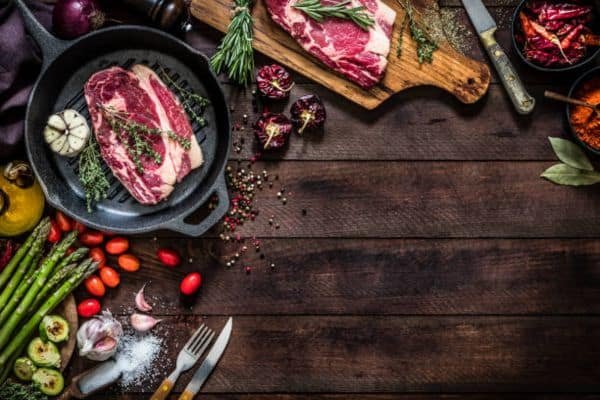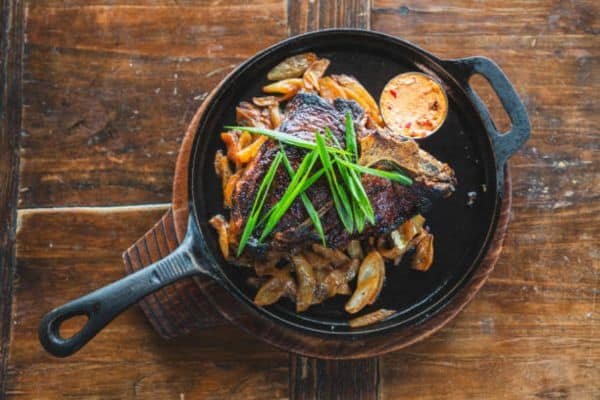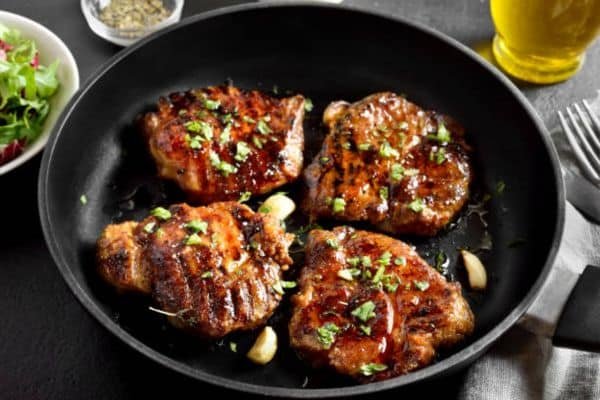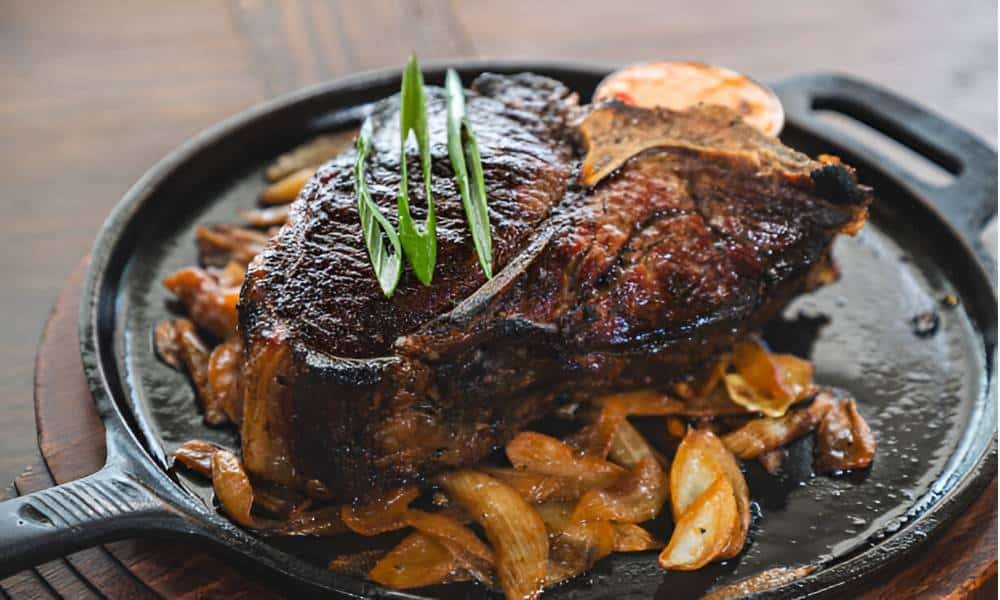I still remember the first time I made veal chops at home. The butcher wrapped them in brown paper, and I carried them like a gift. Rain tapped on the windows as I set a heavy pan on the stove. I felt both eager and unsure, but the aroma soon eased my nerves. Learning how to cook veal chops in a frying pan showed me that great meals can be simple. The pan brings you close to the food—you see the crust form, hear the sizzle, smell the butter. It’s quick, satisfying, and worth mastering.
Choosing the Right Veal Chops

For pan cooking, I like bone-in veal chops best. The bone adds flavour and helps keep the meat moist. Boneless chops cook a bit faster, but they can dry out more easily.
Thickness matters too. A chop about one to one-and-a-half inches thick gives you a juicy center and a golden crust. Thinner cuts can overcook before they brown. Look for chops that are pale pink with fine, even marbling. The fat should be creamy white, and the surface should feel firm, not soft.
Kitchen Tools You’ll Need
A heavy-bottom frying pan is the heart of this dish. Cast iron holds heat well and gives a deep, even sear. Stainless steel is lighter and still delivers a crisp crust.
You’ll also want tongs for turning the chops without piercing the meat. An instant-read thermometer takes the guesswork out of doneness. A sturdy spatula is handy for basting with butter.
The best small fry pan for eggs can also earn its place here. It’s perfect for making quick sides like sautéed mushrooms or fried eggs to serve with the chops.
Prepping the Veal Chops
Take the veal chops out of the fridge about 30 minutes before cooking. This helps them cook evenly from edge to center.
Pat each chop dry with paper towels. Dry meat sears better, giving you that golden crust.
Rub lightly with olive oil, then season both sides with salt and pepper. You can add fresh thyme or rosemary for aroma, but keep it simple so the veal’s flavor shines.
Step-by-Step: How to Cook Veal Chops in a Frying Pan

Set a heavy frying pan over medium-high heat. Add a splash of oil and a knob of butter, letting them melt together. Place the veal chops in the pan with space between them. They should sizzle as soon as they touch the surface.
Sear the first side for 3–4 minutes without moving them. Flip, then tilt the pan to spoon the hot butter and juices over the top. Check with an instant-read thermometer—135°F for medium-rare, 140°F for medium. Transfer to a plate, cover loosely with foil, and rest for 5 minutes before serving.
Pro Tips for Perfect Pan-Cooked Veal Chops

For an even golden crust, start with dry meat and a hot pan. Moisture or low heat will stop browning in its tracks. Never crowd the pan—too many chops lower the temperature. Give each piece room so it sears instead of steams.
Add fresh herbs like thyme or rosemary during the last minute of cooking. This keeps them fragrant without burning. Pay attention to the sizzle. A steady, gentle hiss means the heat is right; a harsh crackle means it’s too high.
Serving Suggestions
After cooking the chops, you can turn the pan juices into a quick sauce. Pour off excess fat, add a splash of white wine or broth, and scrape up the browned bits. Stir in a little butter for a silky finish.Serve the veal chops with creamy potatoes, crisp green beans, or warm crusty bread. Fresh lemon wedges add brightness without overpowering the meat.
Storing and Reheating Leftovers

Store leftover veal chops in an airtight container. Keep them in the fridge and use within two days for the best taste. To reheat, warm the chops slowly in a low oven or on the stove over low heat. Cover them with foil to keep moisture in and avoid drying out the meat.
Adding a splash of broth or a pat of butter while reheating helps keep the chops juicy. Avoid the microwave, as it can make the meat tough and rubbery.
Conclusion
Cooking veal chops in a frying pan is easier than it looks. With a bit of practice, anyone can get juicy, tasty results. Don’t worry about perfection—each time you cook, you’ll learn something new.Try this method and add your own twist with herbs or spices you love. Cooking should be fun and personal, not stressful.

